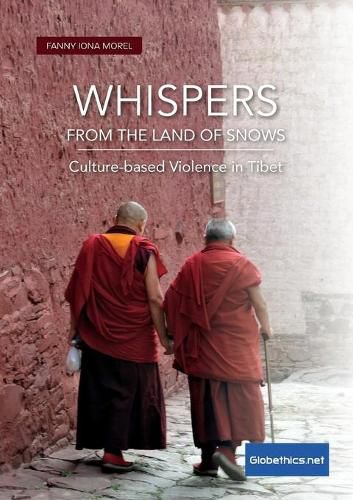Readings Newsletter
Become a Readings Member to make your shopping experience even easier.
Sign in or sign up for free!
You’re not far away from qualifying for FREE standard shipping within Australia
You’ve qualified for FREE standard shipping within Australia
The cart is loading…






This title is printed to order. This book may have been self-published. If so, we cannot guarantee the quality of the content. In the main most books will have gone through the editing process however some may not. We therefore suggest that you be aware of this before ordering this book. If in doubt check either the author or publisher’s details as we are unable to accept any returns unless they are faulty. Please contact us if you have any questions.
This study focuses on the struggle of Tibetans for the recognition of their most fundamental rights and freedoms. In addition, it investigates the correlation between violations of cultural rights and the violence committed by state actors against a community rooted in a profoundly Buddhist society.
Collaboration with Tibetans was at the heart of the participative approach adopted in this interdisciplinary study. It is based on the first-hand testimonies of Tibetan exiles who have sought asylum in Switzerland. It uncovers the experiences, perceptions and opinions of Tibetans, most of whom have suffered various forms of abuse in Tibet.
The approach adopted in this book draws on the 2007 Declaration on the Rights of Indigenous Peoples and 2007 Declaration de Fribourg, which reflect the essential role of cultural rights. It also focuses on the concept of genocide developed by Raphael Lemkin (1900-1959). On this basis, it is shown that several examples of techniques of genocide were, and still are, being employed in Tibet (LEMKIN 1944:82-90). The PRC has violently disrupted the natural process of cultural change in Tibet, through forced cultural assimilation which continues to engender violence.
Tibetans’ resilience, nonviolence and commitment to peace are powerful coping mechanisms. Yet, extreme self-violence continues: since 1998, 157 self-immolations have been reported.
Efforts must continue to advocate for human rights in Tibet, particularly when it comes to issues of freedoms of expression, religion, assembly and of movement, in order to secure a sustainable peace that would benefit both Tibet and the PRC.
$9.00 standard shipping within Australia
FREE standard shipping within Australia for orders over $100.00
Express & International shipping calculated at checkout
This title is printed to order. This book may have been self-published. If so, we cannot guarantee the quality of the content. In the main most books will have gone through the editing process however some may not. We therefore suggest that you be aware of this before ordering this book. If in doubt check either the author or publisher’s details as we are unable to accept any returns unless they are faulty. Please contact us if you have any questions.
This study focuses on the struggle of Tibetans for the recognition of their most fundamental rights and freedoms. In addition, it investigates the correlation between violations of cultural rights and the violence committed by state actors against a community rooted in a profoundly Buddhist society.
Collaboration with Tibetans was at the heart of the participative approach adopted in this interdisciplinary study. It is based on the first-hand testimonies of Tibetan exiles who have sought asylum in Switzerland. It uncovers the experiences, perceptions and opinions of Tibetans, most of whom have suffered various forms of abuse in Tibet.
The approach adopted in this book draws on the 2007 Declaration on the Rights of Indigenous Peoples and 2007 Declaration de Fribourg, which reflect the essential role of cultural rights. It also focuses on the concept of genocide developed by Raphael Lemkin (1900-1959). On this basis, it is shown that several examples of techniques of genocide were, and still are, being employed in Tibet (LEMKIN 1944:82-90). The PRC has violently disrupted the natural process of cultural change in Tibet, through forced cultural assimilation which continues to engender violence.
Tibetans’ resilience, nonviolence and commitment to peace are powerful coping mechanisms. Yet, extreme self-violence continues: since 1998, 157 self-immolations have been reported.
Efforts must continue to advocate for human rights in Tibet, particularly when it comes to issues of freedoms of expression, religion, assembly and of movement, in order to secure a sustainable peace that would benefit both Tibet and the PRC.